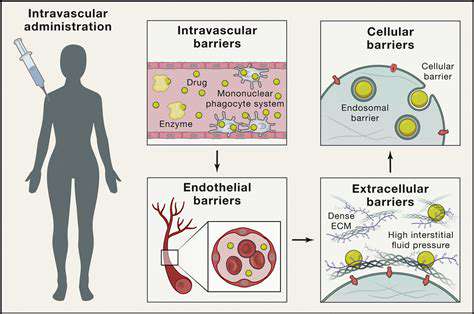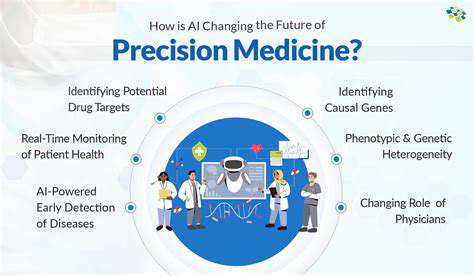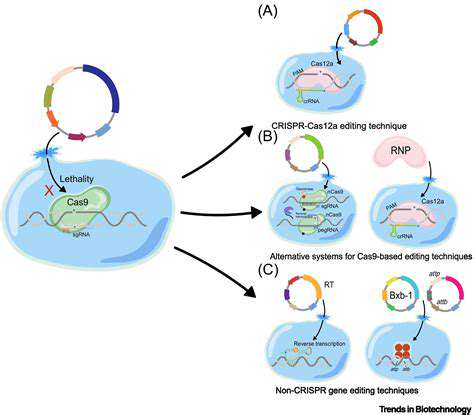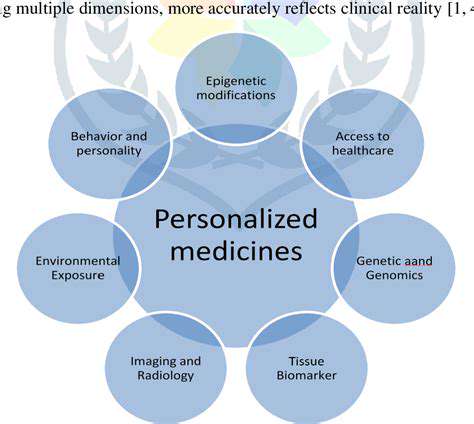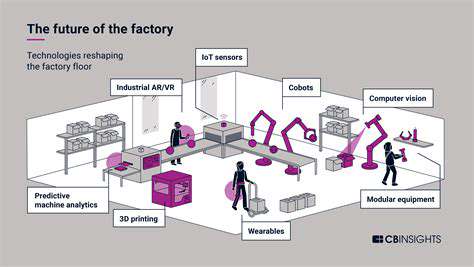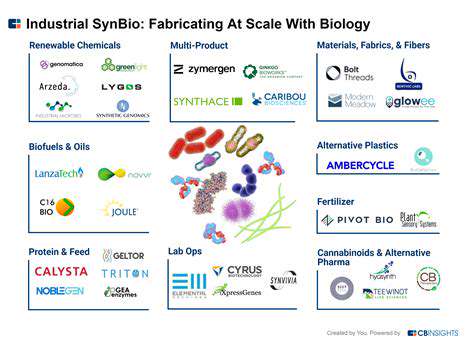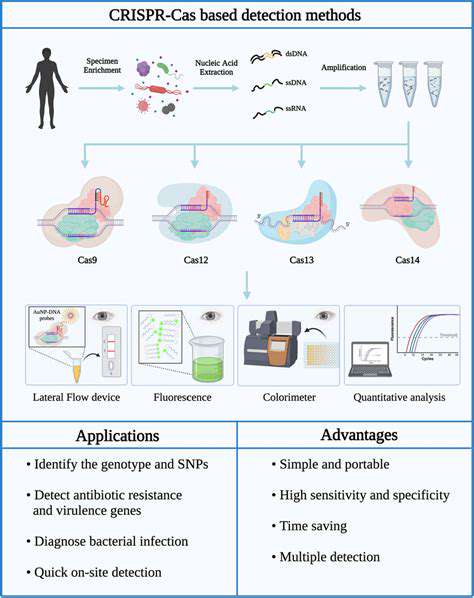
Specificity and Sensitivity in Medical Testing
Medical testing relies heavily on two key metrics: specificity and sensitivity, which determine how reliable and accurate diagnostic results are. Clinicians must grasp these concepts thoroughly to correctly interpret test outcomes and make sound decisions regarding patient treatment. Specificity indicates a test's ability to correctly identify healthy individuals, while sensitivity shows how well it detects those with the condition.
Defining Specificity
In medical diagnostics, specificity measures how accurately a test identifies people without the targeted condition. Tests with high specificity rarely produce false positives, meaning they correctly classify healthy individuals as disease-free. This characteristic is vital for preventing unnecessary medical procedures or treatments for people who don't actually need them.
Defining Sensitivity
Sensitivity, on the other hand, assesses a test's ability to correctly identify individuals who have the condition. Highly sensitive tests catch most cases of the disease, making them indispensable for early detection and timely treatment initiation.
Relationship Between Specificity and Sensitivity
These two metrics often have an inverse relationship in diagnostic testing. Improving sensitivity typically reduces specificity, and vice versa. Finding the right balance depends on the clinical context. For serious conditions where early detection is crucial, high sensitivity may be prioritized even if it means more false positives. Conversely, for conditions with risky treatments, high specificity becomes essential to minimize unnecessary interventions.
Factors Affecting Specificity and Sensitivity
Multiple elements influence these metrics, including test design characteristics, the population being tested, and potential confounding variables. Even something as simple as adjusting the threshold for positive results can significantly impact both specificity and sensitivity.
Clinical Significance of Specificity and Sensitivity
The clinical importance of these metrics cannot be overstated. They directly determine diagnostic accuracy and consequently affect patient outcomes. Understanding their interplay helps clinicians choose appropriate tests and interpret results correctly, leading to better patient management.
Applications of Specificity and Sensitivity
These concepts apply across all medical specialties, from infectious diseases to oncology. Mastering them enables healthcare providers to select optimal diagnostic tools for diverse clinical scenarios. Deep knowledge of these parameters is fundamental for advancing precision medicine and enhancing patient care quality.
Applications in Infectious Disease Diagnostics
Rapid Detection of Pathogens
CRISPR-based systems provide exceptional speed in pathogen identification, transforming infectious disease management. Traditional methods requiring days or weeks can now be completed in hours, thanks to CRISPR's precise targeting capabilities. This rapid turnaround proves invaluable during outbreaks when timely identification and containment are critical.
The technology's ability to detect multiple pathogens simultaneously offers another significant advantage. This multiplex capacity helps identify co-infections, where multiple pathogens are present, enabling comprehensive diagnostic information from a single test.
Improved Sensitivity and Specificity
CRISPR diagnostics outperform conventional methods in both sensitivity and specificity. Their precision in identifying target pathogen sequences minimizes false positives while detecting even minute quantities of infectious agents. This enhanced accuracy reduces unnecessary treatments and optimizes resource allocation in healthcare settings.
Signal amplification techniques further boost sensitivity, making these tests particularly valuable for detecting low-level infections or in immunocompromised patients.
Point-of-Care Diagnostics
CRISPR technology enables diagnostic testing outside traditional lab settings. Portable, user-friendly versions of these tests bring advanced diagnostics to remote or resource-limited areas. This accessibility revolutionizes outbreak response and improves healthcare delivery in underserved regions.
Ongoing efforts to miniaturize and simplify these platforms will further expand their reach and impact on global health.
Multiplexing for Comprehensive Diagnosis
The ability to test for multiple pathogens simultaneously represents one of CRISPR's most powerful features. This capability proves particularly valuable in complex infections or when distinguishing between similar pathogens. Comprehensive diagnostic information from a single test enables more precise treatment decisions and better infection severity assessment.
This multiplex approach also benefits epidemiological studies by providing population-level pathogen prevalence data.
Cost-Effectiveness and Scalability
CRISPR diagnostics offer substantial cost advantages over traditional methods. Reduced reagent requirements and equipment costs make these tests more accessible. When combined with automation potential, this cost-effectiveness enables large-scale disease surveillance and control programs.
The technology's scalability makes it particularly valuable for global public health initiatives and outbreak responses.
Contemporary fitness technologies utilize sophisticated algorithms to analyze comprehensive datasets including exercise history, physiological markers, and lifestyle factors like sleep patterns and stress indicators. These systems create personalized training programs addressing individual needs rather than simply tracking basic metrics. This customized approach dramatically improves adherence and long-term success compared to generic fitness plans.
Beyond Infectious Diseases: CRISPR for Genetic Diagnostics
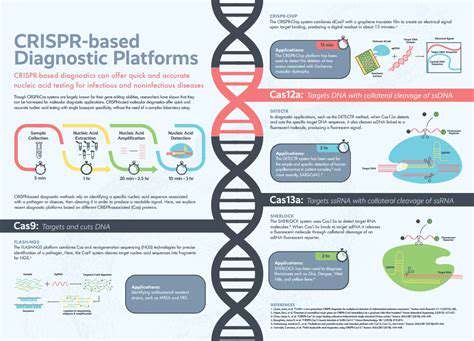
CRISPR's Potential in Genetic Diseases
CRISPR-Cas9 technology offers groundbreaking possibilities for treating genetic disorders. By precisely editing disease-causing genes, CRISPR addresses root causes rather than just managing symptoms. This approach could potentially cure conditions like cystic fibrosis and sickle cell disease, transforming patients' lives.
The technology's applications extend to complex genetic conditions involving multiple genes, though more research is needed in this area.
CRISPR and Cancer Treatment
Cancer treatment represents another promising application for CRISPR. Researchers are developing strategies to selectively target cancer cells while sparing healthy tissue. One approach modifies genes critical for cancer survival, potentially creating more effective, targeted therapies.
Another innovative application involves engineering immune cells to better recognize and destroy cancer cells, opening new possibilities for personalized cancer treatments.
CRISPR's Role in Agriculture
Beyond medicine, CRISPR is transforming agriculture. The technology enables precise modifications to create crops with enhanced pest resistance, drought tolerance, and improved nutritional profiles.
These advancements could significantly improve global food security as the world population continues growing.
Ethical Considerations of CRISPR Technology
The power of gene editing raises important ethical questions. Potential off-target effects and germline editing consequences require careful consideration and regulation. Equitable access to CRISPR-based therapies also presents significant ethical challenges.
CRISPR's Future Applications
CRISPR's potential applications appear nearly limitless. Researchers are exploring uses ranging from infectious disease control to materials science and fundamental biological research.
Continued development promises innovative solutions to numerous challenges across multiple fields.
Future Directions and Challenges

Advancements in AI Integration
Artificial intelligence continues transforming industries through automation and enhanced decision-making. AI-powered diagnostic tools in healthcare demonstrate how these technologies can improve accuracy and efficiency.
Developing reliable, ethical AI systems requires addressing data privacy concerns and implementing robust safeguards against misuse.
Sustainable Practices and Environmental Impact
Growing environmental concerns necessitate sustainable technology development. Transitioning to renewable energy and improving energy storage represent critical steps toward sustainability.
This transition requires substantial investment and shifts in both corporate practices and consumer behavior to protect the planet for future generations.
Ethical Considerations in Technological Advancement
Rapid technological progress demands careful ethical scrutiny. Addressing algorithmic bias and ensuring equitable access to technology remain pressing concerns.
Transparent development processes and clear accountability mechanisms are essential for responsible innovation.
Economic and Societal Impacts of Automation
Automation's effects on employment require proactive management. Investing in education and retraining programs can help workers adapt to changing job markets.
Policymakers and businesses must collaborate to ensure automation benefits are widely shared while mitigating potential economic disruptions.


